NIL
Texas Wide Receiver Trashes Quinn Ewers' $6 Million NIL Offer
Getty Image / iStockphoto wasting yall money fr The former five-star wide receiver trashed the former five-star signal-caller as rumors continue to swirl about a million NIL deal. #Texas QB Arch Manning (& soph WR Johntay Cook) pic.twitter.com/2OiMPQK80K Johntay Cook was the seventh-ranked wide receiver in the recruiting Class of 2023. 41 different schools offered […]
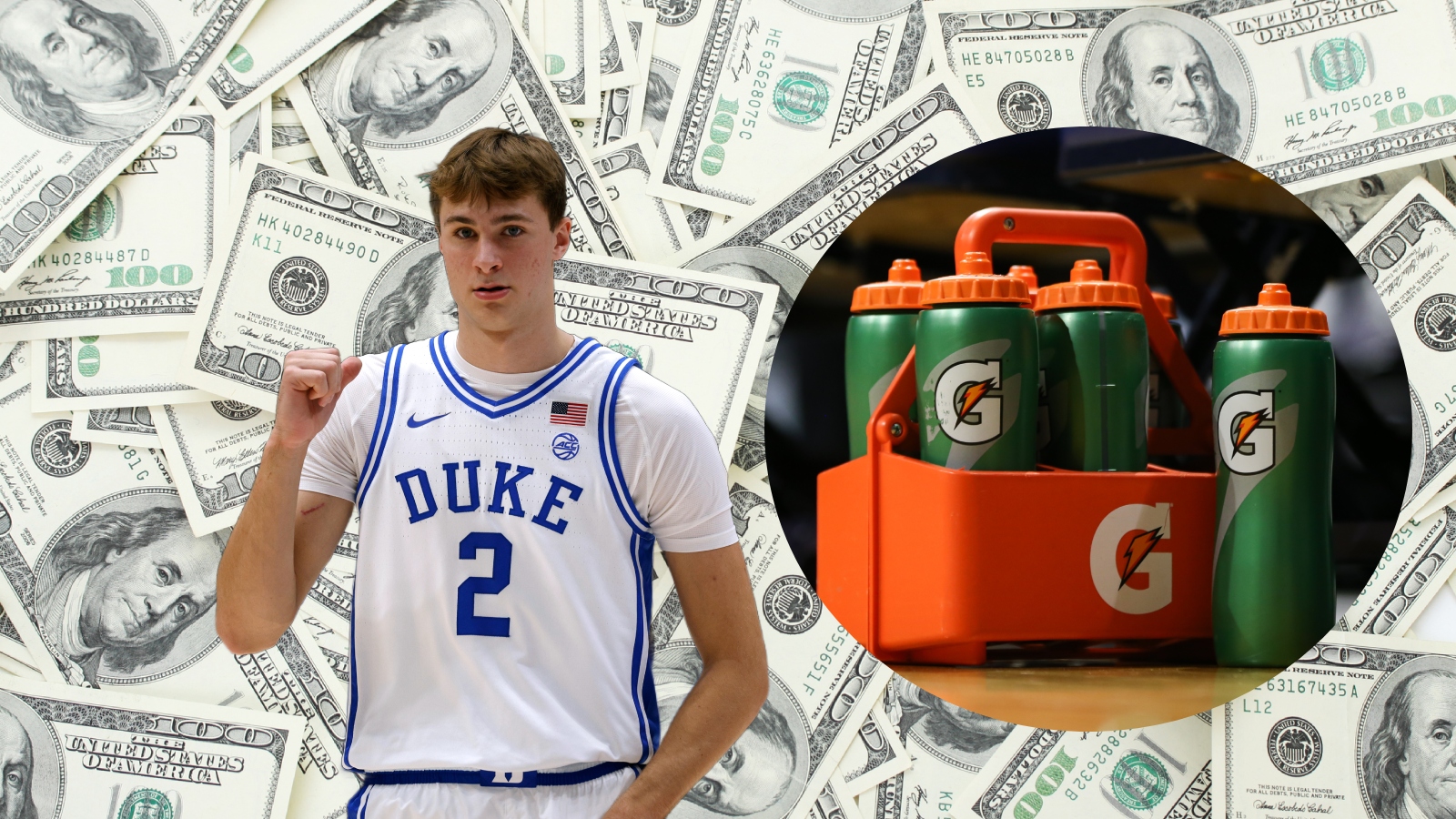


wasting yall money fr
The former five-star wide receiver trashed the former five-star signal-caller as rumors continue to swirl about a million NIL deal.
#Texas QB Arch Manning (& soph WR Johntay Cook) pic.twitter.com/2OiMPQK80K
Johntay Cook was the seventh-ranked wide receiver in the recruiting Class of 2023. 41 different schools offered him a scholarship. The Longhorns ultimately received his commitment.Cook does not believe that would be a good investment for whatever team is supposedly willing to pay up. He responded directly to the initial report with a very straightforward opinion on Ewers.— On3 (@On3sports) December 31, 2024
Enough said!
Will Quinn Ewers run it back for a fifth and final season of college football or enter the NFL Draft pool? Should he choose the former, there is a school out there willing to pay him million for, essentially, nine months of work. Johntay Cook thinks that school is dumb.
— @_jayythegreat_
Cook hit the transfer portal earlier this month as a result of the two frustrating years at Texas. He will continue his career at Washington. Meanwhile, the Longhorns are in the Playoff and their starting quarterback has a decision to make about his future once their run comes to an end.
Ewers has received a M offer to return to College Football and enter the Transfer Portal
Ewers is expected to enter the NFL Draft even though he has one year of college football eligibility remaining. However, there is a growing belief that Name, Image and Likeness money could get him to reconsider. And according to Pete Nakos, a team that is not Texas offered million.
Although there was a lot of buzz about Cook’s potential in Steve Sarkisian’s offense, he caught only 16 total passes for 273 yards and two touchdowns in 2023 and 2024. His production actually saw a pretty significant increase when Arch Manning was at quarterback instead of Ewers.— Nick Baumgardner (@nickbaumgardner) September 3, 2024
Johntay Cook played two years of college football with Quinn Ewers at Texas. It appears as though he was not a fan of his starting quarterback while in Austin.
NEW: Tampering is at an all-time high with Texas QB Quinn Ewers, @PeteNakos_ reports.
NIL
Colin Cowherd, like many in college football, undervalues current talent on USC roster
Colin Cowherd has always had an interesting relationship with USC and how he discusses the football program on his FS1 show. During one of the latest episodes of ‘The Herd with Colin Cowher,’ he and coach Urban Meyer discussed the expectations for the Trojans this upcoming season. It is how Cowherd phrased the initial question, […]

Colin Cowherd has always had an interesting relationship with USC and how he discusses the football program on his FS1 show. During one of the latest episodes of ‘The Herd with Colin Cowher,’ he and coach Urban Meyer discussed the expectations for the Trojans this upcoming season.
It is how Cowherd phrased the initial question, though, that shows an overall lack of appreciation of what this team has done up until this point. He, like many others in college football, is not being thorough in his evaluation of the Trojans.
The extent of how good Jayden Maiava will be in 2025 can be the source of a lot of debate among the Trojan fan base. Though the quarterback is someone who should, in general, be held in higher regard. There are a lot of areas on this roster that shine, beyond safety Kamari Ramsey, who is excellent.
Sticking on the offensive side of the ball, Makai Lemon and Ja’Kobi Lane are two wide receivers who will produce. The worst-case scenario is that they will be a serviceable tandem. Their ceiling is being considered the best overall WR duo in college football by the end of the year.
Maybe not knowing too much about players who were at the junior college level last year is understandable. In any event, Waymond Jordan is about to be a nationally known name. Then Lake McRee is someone who just knows how to make plays and will look into conversations with some of the better tight ends in the Big Ten.
Notable names for USC outside of Ramsey
Defensively, Ramsey certainly deserves a lot of love early on. Jahkeem Stewart is a gigantic talent in more ways than one. It should be equally telling that he is not expected to start on a defensive line that will be improved from last year. Anthony Lucas, Devan Thompkins, Keeshawn Silver, and Kameryn Fountain are only some of the bodies up front who will help turn around narratives about the Cardinal and Gold on that side of the ball.
Eric Gentry and Desman Stephans II are two excellent linebacking options for coach D’Anton Lynn. Bishop Fitzgerald is also patrolling the backfield and is someone who can more than hold his own.
These are only some of the Trojans who will dictate how this season will go. Safe to say, there is a lot of talent and a lot of players beyond just one singular piece that should have USC fans excited about the upcoming year.
NIL
Runnin’ Utes head coach discusses NIL, the transfer portal, moving from NBA to college basketball and more
After spending the last 10 years coaching at the professional level, Alex Jensen is back in the college ranks — which, coincidentally, grows to resemble the NBA more and more by the day. With NIL, the transfer portal and revenue-sharing in play, Jensen understands the game has changed drastically since he suited up for the […]
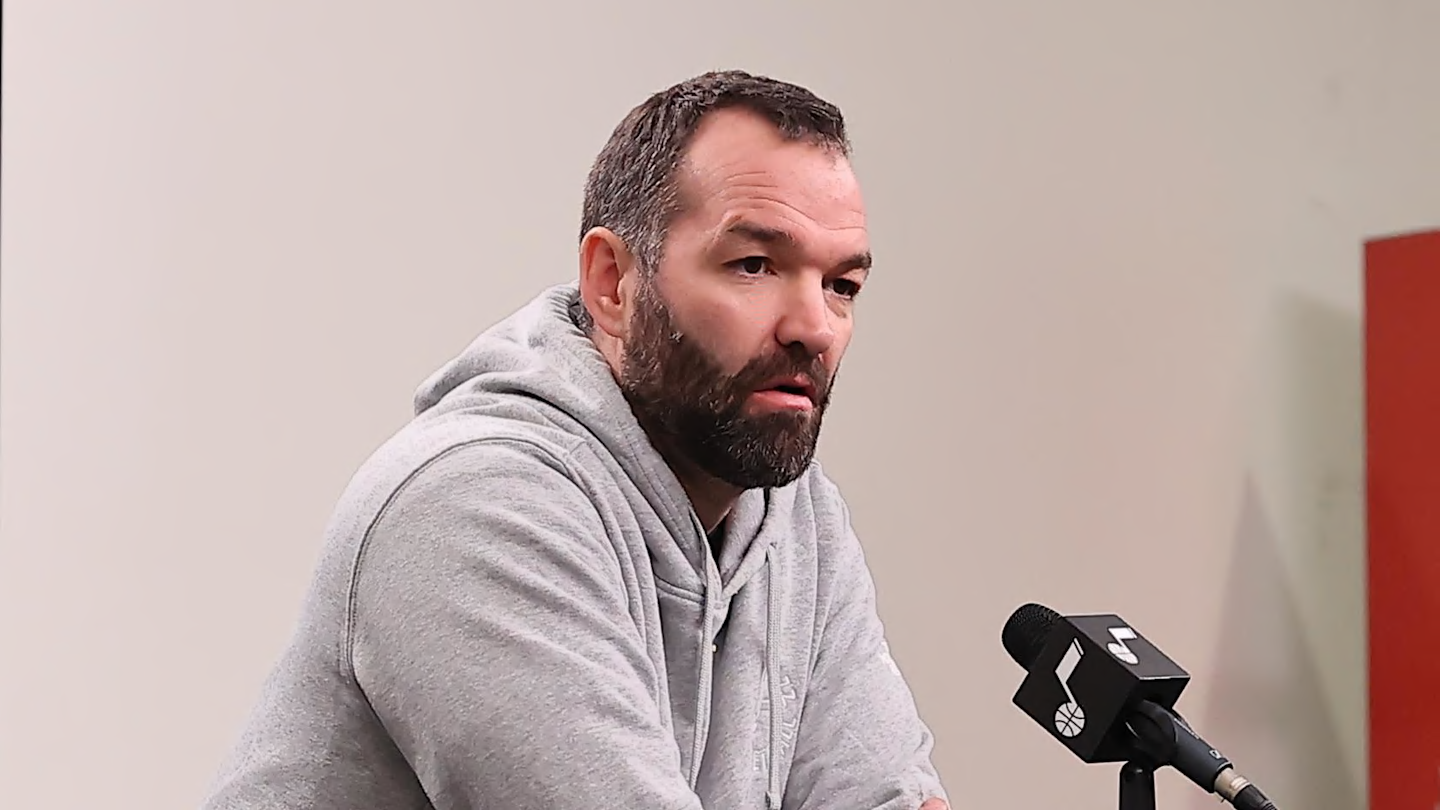
After spending the last 10 years coaching at the professional level, Alex Jensen is back in the college ranks — which, coincidentally, grows to resemble the NBA more and more by the day.
With NIL, the transfer portal and revenue-sharing in play, Jensen understands the game has changed drastically since he suited up for the Utah Runnin’ Utes over 30 years ago. But given his experiences working with the Utah Jazz and Dallas Mavericks in assistant coaching roles, perhaps Jensen is more attuned to the business world than he gives himself credit for.
Jensen made an appearance on The Field of 68 podcast recently, discussing his adjustment from the NBA to the college game, why he took the Utah job, his thoughts on NIL and the transfer portal, and much more. Here’s some of Jensen’s notable remarks, with light edits for clarity.
“It’s getting better. I knew there was going to be a learning curve, because it’s changed. I mean, I haven’t coached in college for, I think, 15 years, and it’s changed since then. I remember right when I left, [the NCAA was] just changing the rule where you could text [recruits] unlimited. And I actually started my Facebook page because right before I left, they were allowing that, to where you can recruit on social media. I haven’t touched it since.”
“But no, it’s been good. I know I have a lot to learn. And to me, that’s the fun part about coaching.”
“It’s interesting how the timing works out, and in a funny way, with NIL and how it’s changing, I think there’ll be a few more guardrails and regulations and everything. I think there’s an appealing side to it in a way — a way that it could be done. And the alma mater; I think because of the relationships I’ve had here, and I’ve been fortunate to be successful and I played here, I think I had a good feel on how it’s done and what it takes, if that makes any sense.”
“I just think with the conversations with the people here at Utah — in my mind, I think it’s kind of coming clear, there’s a visualization that we can be successful here.”
“When I was contemplating taking the job, I called a lot of college coaching friends. That’s the one thing they said: NIL and portal. And it just became clear to me. I truly mean this: I knew from the beginning. I’ve learned a lot about the portal. There was a lot to go through but I didn’t want to get into bidding wars for guys, right? I didn’t want a guy to come just because he’s gonna make the most money. I think it’s more difficult to succeed that way. And just knowing Utah and a lot of the people here, I think there’s plenty enough support to where if you get a guy, you can keep him, if that makes sense.”
“I think there’s a lot of smaller jobs where you do a good job recruiting, you find a diamond in the rough, and then you have no chance of keeping it. And I guess that’s what I want to do. And again, I’m going to learn. It might change. But I think we can get good guys.”
“I think what we’re selling is: you’ll make good money, but [recruits] come here because of the coaching staff, the university, and they want to get better, and then we’re going to win. I think we’ve done a good job so far with that, and — this might be naive — the appeal to me in college is having a kid for more than one year, and I don’t want to have a new roster every year. NBA or college, continuity is still underrated to this day.”
“I think that I kind of felt it at the beginning, but it’s really been apparent to me: I think it’s just a lot of short-term. Myself and the guys I’ve hired on my staff, we tell recruits: I didn’t come here to hit it big and leave, and I think that’s a big part of it. I got a slow start here, because I finished in Dallas, but I wanted to do it right, even if it kind of hurt me the first year. And I don’t think that’s necessarily the attitude in college basketball. It’s like, race, race, race.”
“It’s easy: win. But there’s like a lot of little things because there’s people that are grown up now that talk about, they came to camp when I played, and I worked camp. Utah is that. It’s a big enough place, but it’s also a small enough place where people and boosters, they met the team. I still have lifelong friendships with fans whose kids came to camp and stuff like that, just the kind of the connection, I think. Utah is a place you can do it easier than the other places. You build the excitement, which I think we’re starting to do; and a successful program is, like at any level, is that’s what gets people.”
MORE UTAH NEWS & ANALYSIS
NIL
Florida State baseball offseason tracker: Needs, departures, and transfer additions
Florida State came a game away from returning to the College World Series for the second-straight year, but fell short, and now a bevy of offseason questions need to be answered. For starters, the Seminoles should lose a chunk of the roster that carried them deep into the postseason, similar to what happened in 2024. […]

Florida State came a game away from returning to the College World Series for the second-straight year, but fell short, and now a bevy of offseason questions need to be answered.
For starters, the Seminoles should lose a chunk of the roster that carried them deep into the postseason, similar to what happened in 2024. Jamie Arnold should be a top-five pick when the Draft rolls around in June, Alex Lodise and Max Williams should also be early-round selections, and quite a few other veterans will need to make a difficult choice of staying in school or turning pro.
There are also obvious needs within the roster that must be addressed in the transfer portal if Florida State wants to remain in the upper echelon of college baseball teams. The bullpen in general, but specifically, a left-handed high-leverage arm, should be one of the first priorities for Link Jarrett in his staff. The Noles could not dictate matchups with their right-handed-heavy bullpen in 2025 and need to increase their options next season. FSU also needs to add a power right-handed bat in the outfield. Max Williams’ departure opens up a spot and the Seminoles were too left-handed dominant in their lineup last season. With Myles Bailey, an LHH, headlining FSU’s lineup in 2026, he needs to be protected by an RHH either behind or in front of him.
What the portal looks like as a whole for college baseball will be fascinating. On the one hand, it should be a madhouse with 14 of the 16 SEC teams who did not make it to Omaha looking to course correct and break through in 2026 by throwing gobs of money at players. However, college baseball will be the first sport operating under the new House settlement guidelines. Could that make it a fairer and normal market? Only time will tell.
A season ago, Link Jarrett saw how his team lost in Omaha and tried to plug those holes in the portal. Outfield defense became a struggle to end the year, so he grabbed Chase Williams and Gage Harrelson to give him three center fielders in the outfield. He realized that to defeat high-quality SEC lineups, he needed more velocity in the bullpen, so he found Peyton Prescott and Maison Martinez to run up the radar gun. The direction he takes this offseason will reveal a lot about what the manager feels his team fell short on and what FSU must do to get over the hump.
Roster Departures:
TRANSFER PORTAL
6’1 200lbs
LHP, 1B OF
RS freshman (Spent last 3 seasons at FSU had TJ during the first 2 years)
All Years of eligibility left.
Fb 87-88 T90 CH 78-80 CB 72-74
Pitching video, and swings from yesterday summer ball (Harrisonburg Turks ~ Valley league)
813-727-3735 pic.twitter.com/yPbOiCpQnz— Mason McDougall (@MasonMcDougall7) June 2, 2025
Transfer Portal Additions:
– INF Eli Putnam (Davidson): 64Analytics and Noles247 reported last Wednesday that Eli Putnam would transfer to the Seminoles for his redshirt senior season. Putnam was named First-Team A-10 in each of the last two years and went .349/.419/.660 in 2025 with 19 homers. Putnam mostly played 1st base with the Wildcats, but with that position filled by Bailey, he will most likely move somewhere else on the infield.
High-School Recruits:
NIL
NCAA Roster Caps Could Squeeze Out High School Recruits Under NIL Settlement
What had been anticipated for many months, became a reality last Friday when U.S. District Judge Claudia Wilken, in Oakland, California, granted final approval of the settlement of three antitrust class action lawsuits brought against the NCAA and each of, what were, its Power 5 conferences (now down to four). The settlement created a $2.8 […]

What had been anticipated for many months, became a reality last Friday when U.S. District Judge Claudia Wilken, in Oakland, California, granted final approval of the settlement of three antitrust class action lawsuits brought against the NCAA and each of, what were, its Power 5 conferences (now down to four). The settlement created a $2.8 billion damages pool to make Name, Image and Likeness (NIL) payments to former college athletes, while providing the framework for schools to directly pay current and future college athletes.
In addition to the funds set aside to pay former college athletes, who competed between 2016 and 2024, over the next 10 years, the settlement allows schools to share as much as $20.5 million of their athletic revenues with their student athletes during the upcoming 2025-26 academic year. The revenue sharing cap will grow by 4% each year of the 10-year agreement. In addition, college programs will no longer be limited in how many scholarships they can offer to the athletes on their rosters. If a school so chooses, every athlete on every team it fields, can be offered a full scholarship.
On the flip side, roster sizes have been cut for all but a handful of sports, in an effort, theoretically, to control costs. Discussions around roster limits were the biggest hold up in securing final approval for the settlement, which was agreed to by the lawyers for the plaintiffs and the NCAA in 2024.
One of the reasons the approval of the settlement, which was expected in early April, was delayed until June was to allow the parties to resolve concerns over the proposed cuts to roster sizes.
Estimates on the number of rosters cuts called for under the settlement range between 5,000 and 13,000 across the 43 sanctioned NCAA sports. For example, football programs will be limited to 105 players. Some football programs have carried as many as 180 players with the average roster size being around 125. Men’s basketball has been cut from 17 players to 15, baseball rosters decreased from an average size of 41 to 34. Some sports, mostly on the women’s side, increased.
Arguments seeking to protect the roster spots of student-athletes already on college teams resonated with Judge Wilken. During an April 7th hearing in which various parties were allowed to voice objections to the settlement, the issues revolving around roster limits were the ones which carried weight.
In an April 23rd ruling, Judge Wilken stated, “Because the settlement agreement is not fair and reasonable to the significant number of class members whose roster spots will be or have been taken away because of the immediate implementation of the settlement agreement, the Court cannot approve the settlement agreement in its current form.
“The Court will delay denial of final approval to permit the parties to attempt to modify the settlement agreement so that members of the Injunctive Relief Settlement Class will not be harmed by the immediate implementation of the roster limits provisions. One way of achieving that could be to modify the settlement agreement to ensure that no members of the Injunctive Relief Settlement Class who have or had a roster spot will lose it as a result of the immediate implementation of the settlement agreement. Limits could be accomplished gradually by attrition. There may be other ways of mitigating the harm to members of the Injunctive Relief Settlement Class. A new round of notices to class members may not be required if the parties modify the settlement agreement in a manner that does not adversely affect class members.”
The agreement the parties reached, which ultimately cleared the way for Judge Wilken’s final approval of the settlement, allowed for current college athletes who would not make the cut under the new roster limits, to be classified as “Designated Student-Athletes (DSA),” which, in theory, protects their place on a team’s roster, as an exemption. Athletes with the DSA status will be allowed to remain on their teams and will not count against their program’s roster limit. When all DSAs exhaust their college athletic eligibility, the team will have to fully comply with its mandated roster limit.
“The individual universities have 30 days, and if my math is right, until July 6, to create a list of those designated student athletes from the 2024-25 school year and provide that to class council and their conferences,” said Doug DePeppe, an attorney in the Denver office the Buckalter law firm, which represented several objectors to the settlement, based on the original roster limit provisions. “They have to use good faith and identify those athletes.”
Proposed NCAA Settlement Threatens Non-Revenue Sports: Roster Caps Jeopardize 25,000 D1 Roster Spots
Graduating high school student athletes in the Class of 2025, who were being recruited and/or offered scholarships or walk-on opportunities, are also eligible for the Designated Student Athlete Status.
Those who receive it, most likely owe that opportunity to Gracelyn Laudermilch, a cross country and track star at Northeast Bradford High School in Rome, Pennsylvania.
Laudermilch was set to commit to her dream college. She was not guaranteed a scholarship, but she was assured of a roster spot with an opportunity to earn a scholarship if she could meet certain performance levels, according to a May 14 story by Front Office Sports. When it came time to make her formal commitment, however, her future coach gave her some tough news.
“You cannot commit. … I just found out four hours earlier that I have to cut half of my team,” Laudermilch told FOS of her conversation with the coach.
Laudermilch was in a bind, as she had passed on all of her other Division I suitors. After news accounts about the settlement case, she learned she could apply to be an objector, for which, to her astonishment, she was selected. She flew to California to testify before Judge Wilken and, according to many observers, stole the show.
In her passionate testimony, Laudermilch said, “I believe this settlement is unfair. The roster limits destory the hard work and dreams of thousands of student athletes like me all over the nation. By God’s grace, I have been able to reach many of my desired stepping stones: I am a 4x state medalist and an All-American. I hold numerous school records. As a junior, I had met the walk-on and scholarship standards of several D1 schools. As I began my senior year, I was on course to attend my dream college. My 14-year old self would have been so proud.
“But then came the House vs. NCAA case, and all of my plans came to a halt. I had been in contact with five Division I schools and one NAIA school. I went on three college visits and carefully made my decision. My other offer deadlines came. I politely declined them. My dreams, prayers and hopes were becoming my reality. I was so excited to have the opportunity to train in impressive facilities under outstanding coaches and with amazing girls who have the same high goals. I made the call to commit. It was October 30, 2024 at 4 pm. The coach compassionately told me that mere hours earlier she had been informed that their university was opting into the settlement. I hung up the phone and cried.”
According to DePeppe, college coaches will have to make a list of current high school senior athletes which they recruited and submit them for approval on the DSA list.
“Certainly, those who accepted a scholarship will be granted the DSA status,” said DePeppe. “If they were actively being recruited or offered walk-on opportunities, the universities will be required to use good faith to identify them, but the coaches will have some discretion there.”
Unfortunately, no such protections were offered to athletes in the Class of 2026 or beyond. Those student-athletes will experience the full impact the limited Division I opportunities. Those athletes will be forced to move their aspirations to the Division II or III and JUCO levels, possibly taking spots from other athletes who may have found their place at those levels.
In a communication to Kansas University student-athletes, issued on June 7 by Kansas Athletic Director Travis Goff and obtain by High School On SI, Goff explained the impact of the new roster limits.
“With the settlement, most sports will see their rosters reduced, though a couple may see minor increases,” wrote Goff. “There will now be ‘designated student-athletes.’ What this means is that student-athletes that would have been cut from the team due to roster limits will receive special designated status that allows them to not count against any roster limit, whether at KU or another university.
“Over the next several weeks we will be working with conference officials on this designation process and will then communicate with those impacted.”
The College Sports Commission (CSC), which was established immediately after the settlement was announced, to insure enforcement and compliance with the provisions of the settlement, defines a Designated Student Athlete as follows:
Any student-athlete who a school attests was or would have been removed from the school’s 2025-26 roster due to the implementation of roster limits who was either:
There will always be college opportunities for elite high school student-athletes, especially those of the 4- and 5-star variety in football as well as men’s and women’s basketball. But the dawn of the NIL era, which has reached warp speed in the last 2-3 years, had already begun to make being recruited a difficult task for those athletes not as highly regarded as those in the top trier.
The relaxing of transfer rules and the flood of NIL money into big time college athletics, which essential has made every athlete a free agent each and every year of his or her college eligibility, has led to an explosion in the use of the transfer portal.
No longer can a college coach count on a player remaining and developing within a program. If an athlete does not receive enough playing time or believes more NIL money awaits at another program, they can up and leave. Coaches are often faced with fielding an entirely new roster from one season to the next. This has led coaches to hedge on offers to high school athletes not in the top tier, or preferring to recruit a transfer with proven college experience.
NIL
NCAA hints at ‘positive momentum’ towards men’s basketball moving to quarters from halves
Buried deep inside a Tuesday press release announcing major changes to “help enhance the flow of the game” in men’s college basketball was a hint at an even more significant change to the game. Last month, the NCAA Men’s Basketball Rules Committee proposed the creation of a joint working group to gather feedback for potentially […]

Buried deep inside a Tuesday press release announcing major changes to “help enhance the flow of the game” in men’s college basketball was a hint at an even more significant change to the game. Last month, the NCAA Men’s Basketball Rules Committee proposed the creation of a joint working group to gather feedback for potentially moving from halves to quarters.
Since then, the NCAA revealed there’s been “positive momentum” toward the move to quarters, and the NCAA Playing Rules Oversight Panel further recommended Division I conferences actually develop a working group to provide further feedback on the option. Men’s college basketball is the only division of the sport that utilizes halves as opposed to quarters. Women’s college basketball has utilized quarters since the 2015-16 season.
“In considering the decisions last month, the NCAA Men’s Basketball Committee had conversations about ways to continue this direction in the upcoming years, which includes positive momentum for moving the men’s game from halves to quarters,” the NCAA’s press release Tuesday read. “The committee realizes there are hurdles to implementing the quarter format to the game, including the structuring of media timeouts to accommodate commercial inventory.
“The committee recommended NCAA Division I conferences create a joint working group to provide feedback on the potential change from halves to quarters.”
NCAA approves multiple major rule changes in men’s college basketball
The NCAA Playing Rules Oversight Panel approved proposed changes that are expected to enhance the flow of men’s college basketball beginning in the 2025-26 season, according to a release Tuesday. Those changes include allowing coach’s challenges to review out-of-bounds calls and goaltending or basket interference, as well as modifications to the rule on continuous motion on shot attempts.
Regarding the proposed coach’s challenge, much like in college football, teams must have a timeout to request an instant replay review. If the challenge review is successful, teams will be granted an additional video review challenge for the remainder of the game, including overtime. If unsuccessful, the team loses the ability to challenge any other calls in the game.
Coach challenges will not impact an officials’ use of instant replay for timing mistakes, scoring errors, shot clock violations, 2-point vs. 3-point field goal attempts, flagrant fouls, etc.
Officials can initiate video reviews on basketball interference/goaltending and restricted arc plays in the final two minutes of regulation and in overtime. The NCAA revealed recent data showed these sort of reviews caused “minimal game interruptions,” and the Men’s Basketball Rules Committee members believe the coach’s challenge “will have a significant impact on the flow of the game.” NCAA officials aren’t allowed to conduct video review on out-of-bounds calls unless first prompted by a coach’s challenge.
Other enhancements approved Tuesday include new points of emphasis for officials to address delay-of-game tactics, limiting time at the review monitor, improving game efficiency and reducing physicality.
With regard to the changes to the continuous motion rule, an offensive player who ends his dribble going toward the basket and takes contact from a defensive player is now permitted to pivot or complete the step and finish the field goal attempt. Currently, players are awarded the basket/field goal only when they’re are fouled in the process of shooting the ball.
NIL
Report: Women’s sports athletes to file appeal on House vs. NCAA settlement citing Title IX violations
It was only a matter of time. Five days after California district judge Claudia Wilken‘s Friday night approval of the landmark House v. NCAA settlement, a group of women’s sports representatives have filed an appeal citing Title IX violations, according to On3’s Pete Nakos. Front Office Sports insider Amanda Christovich first reported the group’s intent […]

It was only a matter of time. Five days after California district judge Claudia Wilken‘s Friday night approval of the landmark House v. NCAA settlement, a group of women’s sports representatives have filed an appeal citing Title IX violations, according to On3’s Pete Nakos. Front Office Sports insider Amanda Christovich first reported the group’s intent to appeal earlier Wednesday.
The group of women’s sports athletes are arguing the House settlement — which officially ended college sports’ long-standing “amateurism” model and ushered in revenue-sharing that allows Division I schools to provide direct financial payments to student-athletes — violates the Title IX gender equality statute since it doesn’t include any language that directly addresses Title IX.
The appeal, which named eight objectors — Vanderbilt cross country runner Kacie Breeding; former or current College of Charleston soccer players Elizabeth Arnold, Savannah Baron, Lexi Drumm, Riley Hass and Emmie Wannemacher; College of Charleston volleyball player Emma Appleman; and Virginia volleyball player Kate Johnson — was filed to the U.S. Court of Appeals for the Ninth Circuit, according to the filing.
Title IX appeal delays planned $2.8 billion in back damage payment proccess
The Title IX appeal will not impact future revenue-sharing plans, but could delay the $2.8 billion back damage payment process for college athletes from 2016-24 that opted in to the settlement.
Instead of facing $20 billion in back damages, the NCAA and Power Five conference defendants signed off on a 10-year settlement agreement that includes $2.776 billion in back damages. The NCAA is responsible for paying the amount over the next decade, approximately $277 million annually. Roughly 60% will come from a reduction in annual distribution to institutions, including from all non-defendant schools that opt into the settlement. The NCAA is tasked with closing the other 40%, which will come through reducing operating expenses.
The settlement also imposes new restrictions on college sports. Deloitte’s NIL clearinghouse, titled “NIL Go,” will now regulate all third-party NIL deals of $600. If not approved, the settlement says a new third-party arbiter could deem athletes ineligible or result in a school being fined. In a gathering at the ACC spring meetings last week, Deloitte officials reportedly shared that 70% of past deals from NIL collectives would have been denied, while 90% of past deals from public companies would have been approved.
Beginning July 1, Power conference schools — and non-Power conference programs that opt into the settlement by June 30 — will be able to share as much as $20.5 million with athletes, with football expected to receive approximately 75%, followed by men’s basketball (15%), women’s basketball (5%) and the remainder of sports (5%). The amount shared in revenue will increase annually.
Power conference football programs are expected to have an additional $13-16 million to spend on rosters beginning with the 2025 season, according to Nakos. Many schools have front-loaded contracts ahead of the settlement’s approval, allowing them to skirt the new rules and take advantage of contracts not vetted by Deloitte clearinghouse NIL Go before June 7.
— On3’s Pete Nakos contributed to this report.
-

 Health6 days ago
Health6 days agoOregon track star wages legal battle against trans athlete policy after medal ceremony protest
-

 NIL2 weeks ago
NIL2 weeks ago2025 NCAA Softball Tournament Bracket: Women’s College World Series bracket, schedule set
-

 Professional Sports6 days ago
Professional Sports6 days ago'I asked Anderson privately'… UFC legend retells secret sparring session between Jon Jones …
-

 College Sports2 weeks ago
College Sports2 weeks agoIU basketball recruiting
-

 Professional Sports6 days ago
Professional Sports6 days agoUFC 316 star storms out of Media Day when asked about bitter feud with Rampage Jackson
-

 Rec Sports2 weeks ago
Rec Sports2 weeks agoScott Barker named to lead CCS basketball • SSentinel.com
-

 Youtube3 weeks ago
Youtube3 weeks agoAnt greets A-Rod & Barry Bonds before Game 3
-

 Rec Sports2 weeks ago
Rec Sports2 weeks agoJ.W. Craft: Investing in Community Through Sports
-

 Youtube3 weeks ago
Youtube3 weeks agoLogo LeBron
-

 College Sports2 weeks ago
College Sports2 weeks agoOlympic gymnastics champion Mary Lou Retton facing DUI charge




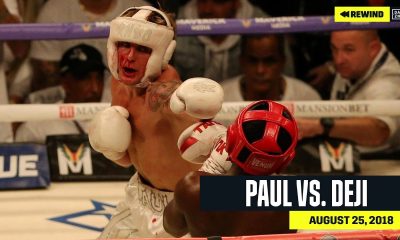

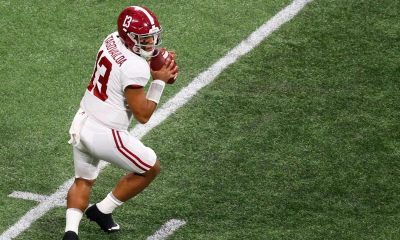











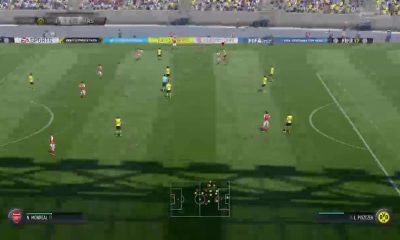



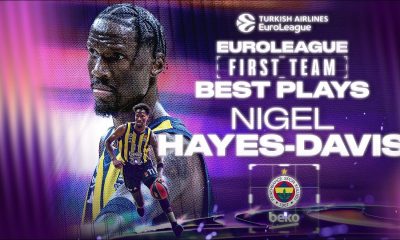
























 | January 27, 2024
| January 27, 2024


















